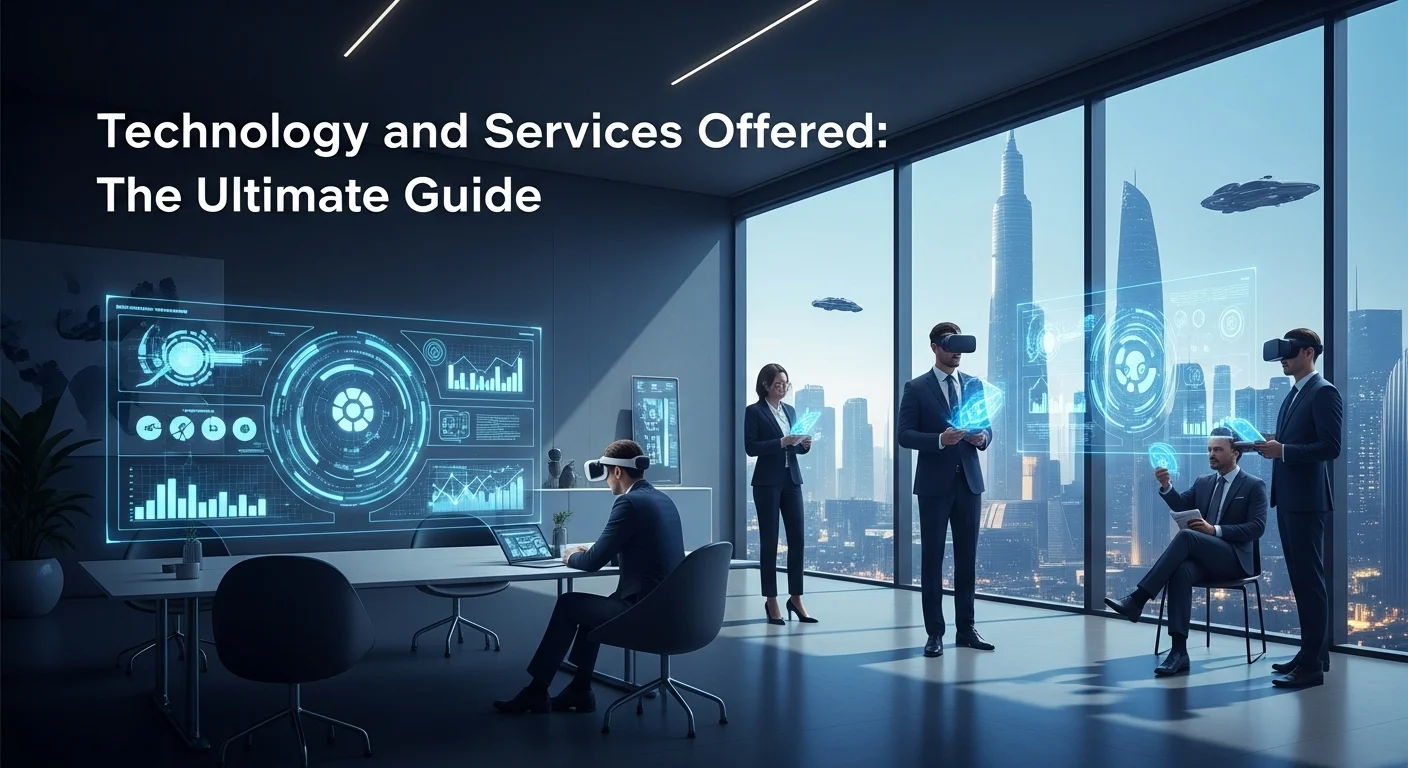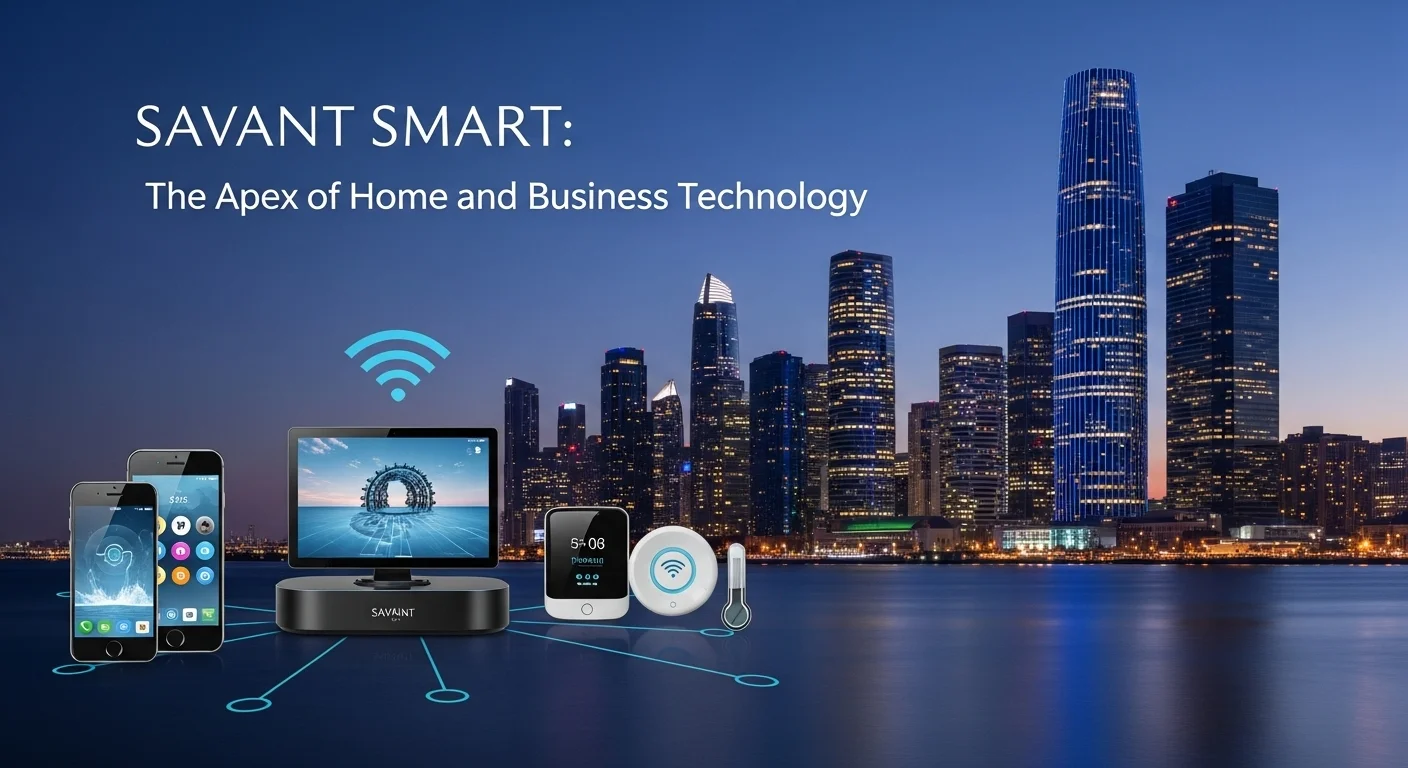What is a Computing Platform? A Real-World Guide for Your Business
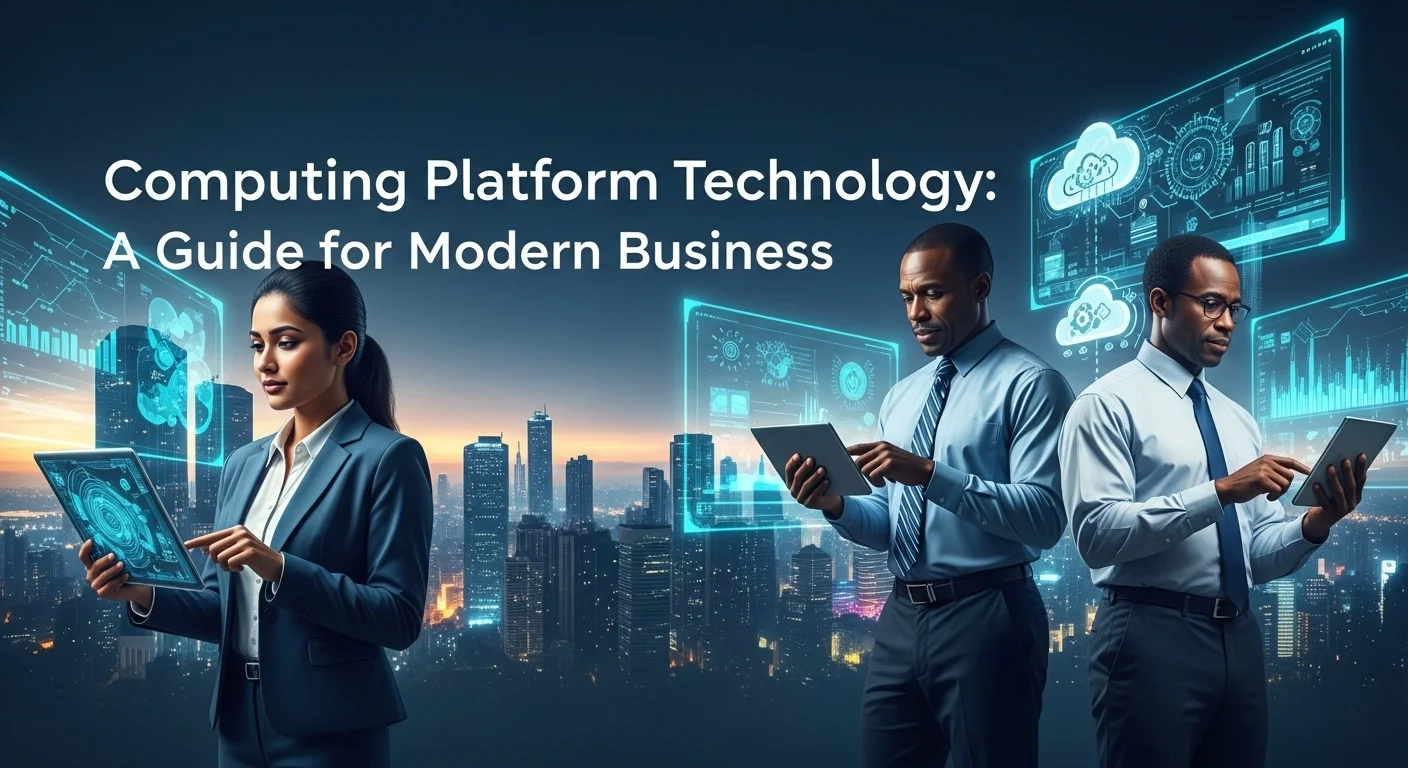
Executive Summary
In my years working in tech, I've noticed 'computing platform' is a term that gets thrown around a lot, but few people outside of IT really grasp what it means for their business. Think of it as the foundation of your digital house—every app, every piece of software, every customer interaction is built on top of it. Getting it right is not just a tech problem; it's a core business strategy. Whether we're talking about the immense power of a High-Performance Computing (HPC) platform used for groundbreaking research, or the lean, cost-effective serverless model that powers the slick apps we use every day, your choice has huge consequences for your budget, speed, and ability to grow. This article is my attempt to cut through the jargon. We'll explore what these platforms are, look at different types like unified and serverless computing, and give you a straightforward guide to choosing the right one to fuel your company's success and innovation.
Table of Contents
Table of Contents
- What is a Computing Platform and Why Does It Matter?
- The Evolution of Computing Platforms
- Its Strategic Importance for Your Business
- Deep Dive: High-Performance Computing (HPC) Platform
- Deep Dive: Serverless Computing Platform
- Deep Dive: Unified Compute Platform
What is a Computing Platform and Why Does It Matter?
In the tech world, we love our jargon, but 'computing platform' is a concept that's truly fundamental. I always like to explain it with a theater analogy. When you watch a play, you see the actors and the story (the application). But for the play to happen, you need a stage, lights, sound systems, and a crew working backstage. That entire backstage operation is the platform. It’s the environment where software runs. It's not just one thing, but a stack of technologies working together. It starts with the physical hardware—the processors, memory, and storage—and moves up to the operating system (like Windows or Linux) that manages it all. On top of that, you have other services and libraries that your applications rely on. Choosing a platform is one of the most critical decisions you'll make. It directly impacts your development speed, performance, security, and ultimately, your bottom line. The right platform can be a launchpad for incredible innovation; the wrong one, a constant source of headaches and limitations.
The Evolution of Computing Platforms
The idea of a 'platform' has changed so much over the years. I remember working with systems early in my career that look ancient now. We started with massive, room-sized mainframes that did everything. Then came the client-server model, which split the work up. The PC revolution put a computer on every desk, making operating systems like Windows the dominant platform. When the internet took off, the web browser became a platform in itself, running applications regardless of the local OS. Today, we live in the age of the cloud. Modern platforms aren't tied to one box in your office anymore. They are spread across huge, global data centers run by providers like AWS, Microsoft Azure, and Google Cloud. This shift has given us incredibly powerful and flexible models that can serve a tiny startup just as well as a global corporation. Understanding this evolution helps you appreciate the amazing options we have available today.
Its Strategic Importance for Your Business
Let's be clear: in today's world, technology isn't just a support department; it's the engine of your business. Your computing platform is the foundation for every digital part of your company, from your website to your internal accounting software. I can't tell you how many times I've seen a brilliant business idea get bogged down by the wrong tech foundation. A scalable platform means your e-commerce site won't crash during the holiday rush. An efficient platform saves you money on operational costs, which goes straight to your profit margin. A secure platform protects your customers' data and your company's reputation. And most importantly, a modern, flexible platform lets your developers build and release new features quickly, keeping you agile and ahead of the competition. This isn't just an IT decision; it's a core business strategy that affects your ability to adapt, grow, and compete.
Deep Dive: High-Performance Computing (HPC) Platform
Sometimes, regular computing power just isn't enough. When you need to solve truly massive problems, you turn to a high-performance computing (HPC) platform. If a standard server is a talented solo musician, an HPC system is a full symphony orchestra. By linking thousands of processors to work together in parallel, these platforms can tackle incredibly complex calculations. We often call them supercomputers. Under the hood, an HPC architecture consists of compute nodes (the servers), a lightning-fast network connecting them, and a high-speed storage system that can feed them data without a bottleneck. These powerful systems are essential for scientific research like climate modeling or drug discovery, complex engineering simulations, and financial modeling. Years ago, this power was reserved for huge institutions. Now, thanks to the cloud, any organization can rent supercomputing power, making HPC more accessible than ever.
Deep Dive: Serverless Computing Platform
On the other end of the management spectrum, we have the serverless computing platform. Now, the name is a bit of a fib—of course, servers are still involved! The 'serverless' magic is that as a developer, you don't have to think about them at all. The cloud provider handles all the provisioning, managing, and scaling of servers for you. The most common model is called Function-as-a-Service (FaaS). You write small snippets of code (functions) that run in response to specific triggers, like a user uploading a photo. That trigger runs your function to, say, resize the photo automatically. The beauty of this model is its incredible efficiency. You pay only for the exact compute time your function uses, right down to the millisecond. If nobody is using your feature, you pay nothing. If a million people use it at once, the platform scales up instantly to handle the load. This makes a serverless computing platform fantastic for event-driven applications and APIs, offering amazing agility and cost savings. The trade-offs? You have to watch out for vendor lock-in and potential 'cold starts' when a function takes a moment to warm up.
Deep Dive: Unified Compute Platform
In a traditional corporate data center, you often have separate teams and systems for servers (compute), storage, and networking. Managing these 'silos' can be a nightmare of complexity and inefficiency. This is exactly the problem a unified compute platform (UCP) was designed to solve. A UCP bundles these three components into a single, pre-engineered, and cohesive system. Think of it as a 'data-center-in-a-box.' The goal is to create one centrally managed pool of resources that's far easier to deploy, manage, and scale. Cisco's UCS is a famous example. By integrating everything, a UCP dramatically simplifies operations, reduces messy cabling, lowers power costs, and makes your IT team's life much easier. This is a great way for businesses to modernize their on-premise data centers and build a solid foundation for a private or hybrid cloud. Each of these platforms—the powerhouse HPC, the nimble serverless model, and the integrated UCP—offers a different tool for a different job. The key is understanding which tool is right for yours.
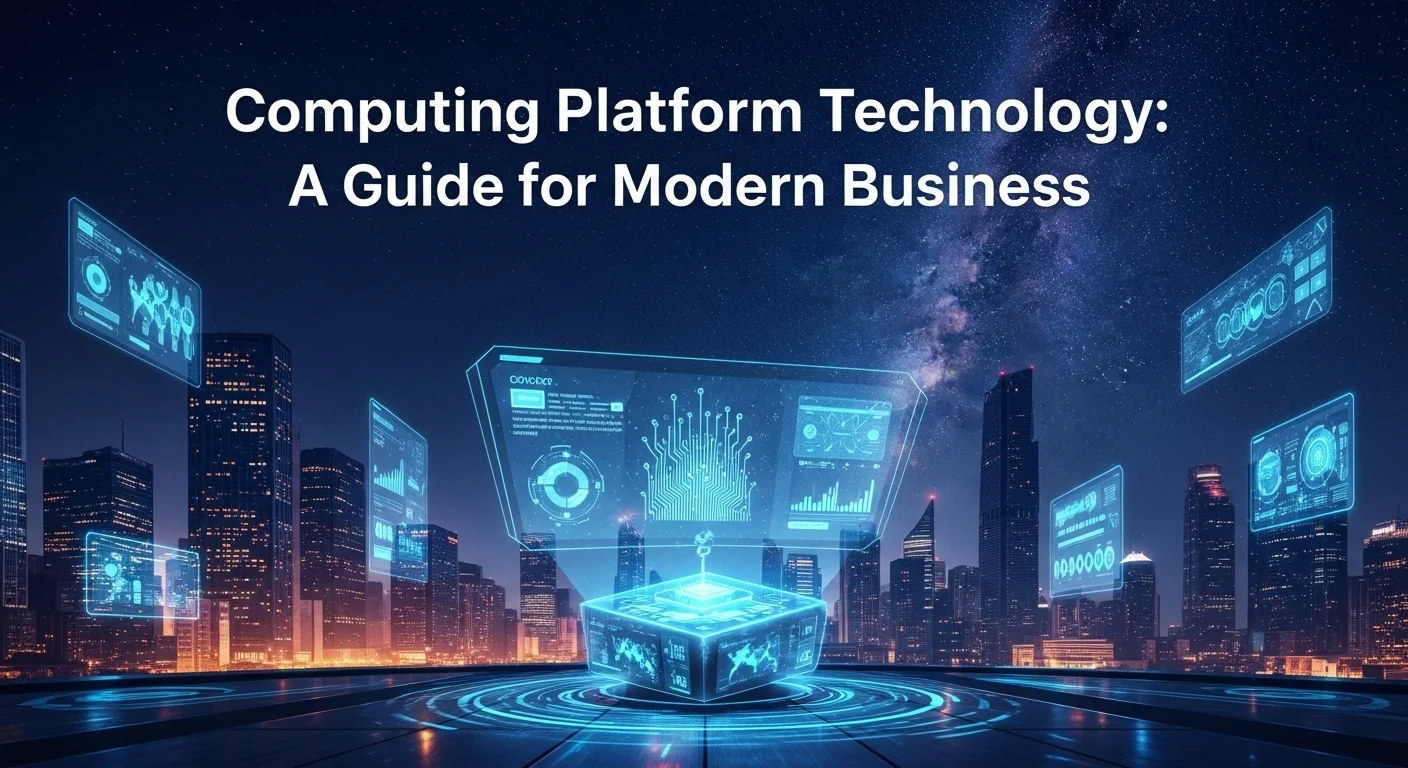
A Complete Guide to Choosing Your Platform
Making the right choice on a computing platform is one of those foundational decisions that will ripple through your business for years. It's not just a technical choice; it's a business one that affects your budget, your team's focus, and how fast you can innovate. I've built this guide to walk you through the key considerations and solutions so you can make a strategic choice with confidence. Let's move beyond the jargon and build a future-proof tech stack for your business.
A Framework for Selecting Your Platform
To avoid getting lost in the options, you need a clear framework. Before you jump in, let's walk through a few key questions I always ask my clients to evaluate their needs:
- What does your workload look like? Is your app hungry for processing power (CPU), memory, or fast data access (I/O)? Is its usage predictable, or does it come in sudden bursts? A scientific simulation has vastly different needs than a customer-facing website.
- How do you need to scale? Are you planning for steady growth, or do you need to handle unexpected spikes in demand instantly? A serverless computing platform is a champ at automatic scaling, while a traditional server needs manual intervention.
- What's your budget model? Can you afford a large upfront investment in hardware (Capital Expenditure), or does a pay-as-you-go monthly bill (Operational Expenditure) make more sense? The cloud's OpEx model is often a huge win for startups.
- What's your team's expertise? Do you have the in-house talent to manage servers, operating systems, and networks? If not, a managed service like a PaaS or a serverless computing platform can lift that burden from your team.
- What are your security and compliance needs? Are you in a regulated industry like healthcare (HIPAA) or dealing with European customer data (GDPR)? Some sensitive workloads might demand the control and isolation of a private, on-premise solution.
On-Premise vs. Cloud vs. Hybrid: The Deployment Models
Just as important as *what* platform you choose is *where* you run it. You've got three main options:
1. On-Premise Platforms
This is the traditional model: you own, operate, and manage all of your infrastructure in your own data center. From my experience, the main driver here is control. It gives you the maximum say over your hardware, software, and data, which can be non-negotiable for some security or compliance scenarios. For businesses looking to streamline their on-premise setup, a unified compute platform is a fantastic choice, as it brings much-needed simplicity to managing all those moving parts. The downsides? High upfront costs and the ongoing headache of maintenance and upgrades.
2. Cloud Platforms
The cloud is all about outsourcing the hardware. Companies like AWS, Azure, and GCP provide computing services over the internet, letting you rent instead of buy. This model is incredibly popular for good reason. It comes in a few flavors:
- Infrastructure-as-a-Service (IaaS): This gives you the fundamental building blocks—virtual servers, storage, networking. You still manage the OS and apps, but not the physical machines. It's the most flexible cloud model.
- Platform-as-a-Service (PaaS): PaaS takes it a step further, managing the OS and underlying infrastructure for you. Your developers can just focus on building and deploying code. It's a huge productivity booster.
- Software-as-a-Service (SaaS): This is when you use a complete application over the internet, like Salesforce or Google Workspace. You don't worry about the platform at all; you just use the software.
3. Hybrid Cloud Platforms
A hybrid approach is a mix-and-match strategy, combining your private, on-premise infrastructure with public cloud services. I see this model becoming more and more common. It really offers the best of both worlds. You can keep your most sensitive data and core systems on-premise for control, while using the public cloud's scalability and innovation for things like new app development, testing, or disaster recovery. A well-designed hybrid strategy often uses an on-premise unified compute platform that's built to connect seamlessly with cloud services, giving you a consistent experience everywhere.
A Quick Word on Containers and Kubernetes
You simply can't talk about modern platforms without mentioning containers. Think of a technology like Docker as creating a standardized shipping container for your code. It packages your application and all its dependencies into one neat, portable unit. That container then runs identically anywhere—on your laptop, in your data center, or in the cloud. It finally solves the age-old developer problem of 'but it worked on my machine!' Kubernetes is the tool that has become the industry standard for managing these containers at scale. It automates the deployment, scaling, and operation of your containerized apps. In effect, Kubernetes creates its own powerful, abstract compute platform on top of any infrastructure. For many companies I work with, Kubernetes is now the primary place they run their applications, from simple websites to the most complex architectures.
Bringing it to Life: Business Solutions
Let's see how this plays out in the real world:
- E-commerce: A major online retailer I know uses a cloud platform with a serverless computing platform for its backend. This lets their site handle the crazy spikes of Black Friday traffic by scaling up automatically, and then scaling back down so they aren't paying for idle servers the rest of the year.
- Scientific Research: A biotech firm can use a high-performance computing platform on the cloud to simulate how different molecules interact. This massively accelerates their drug discovery process, helping them find promising new treatments in a fraction of the time.
- Finance: A large bank might use a hybrid model. Their core banking systems and sensitive customer data live on a secure, on-premise unified compute platform to meet strict regulations. At the same time, their innovation lab uses the public cloud to quickly build and test new mobile banking apps.
- Manufacturing: A car manufacturer relies on a unified compute platform on the factory floor to run its critical supply chain and automation systems. The reliability and simple management are key in an environment where any downtime costs a fortune.
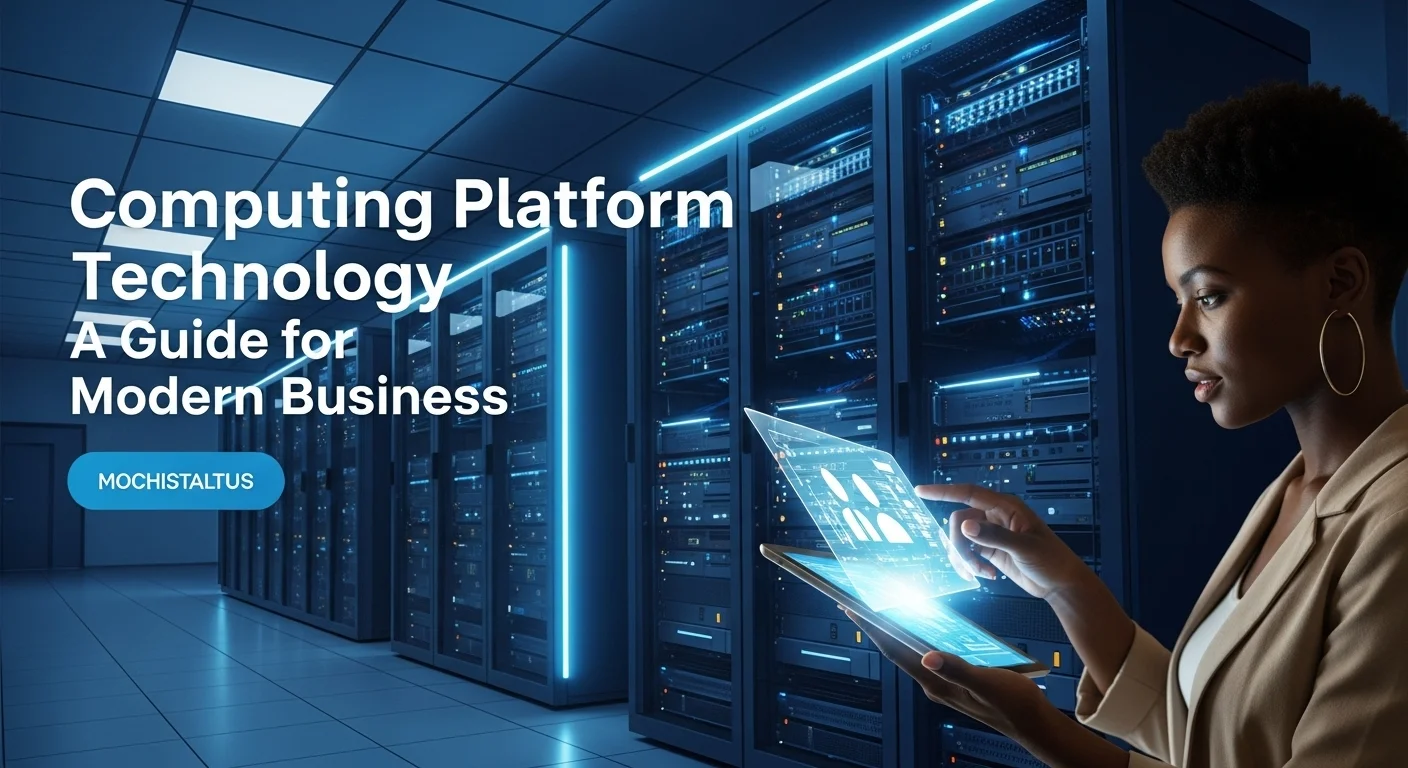
Tips and Strategies to Master Your Computing Platform
Getting your platform running is just the starting line. I've seen many companies make a great choice and then fail to get the most value out of it. The real work begins with optimization, management, and evolving the platform as your business needs change. A platform isn't something you set and forget; it's a living environment that needs continuous care to stay secure, cost-effective, and performant. Here are some practical tips and strategies I've learned over the years to help you maximize your investment.
Best Practices for Platform Management
Whether you're running a server in your own rack or a complex multi-cloud setup, solid management practices are non-negotiable.
1. Automate Everything with Infrastructure as Code (IaC)
Stop clicking around in a management console. Manually configuring servers is slow, prone to human error, and simply doesn't scale. The modern approach is Infrastructure as Code (IaC). Using tools like Terraform or Ansible, you define your entire infrastructure—servers, networks, databases, even your serverless computing platform functions—in text files. This brings all the benefits of software development to your operations: version control, code reviews, and automated testing. It ensures your development, staging, and production environments are identical and makes rebuilding your entire platform a repeatable, reliable process.
2. Build Security in from the Start (DevSecOps)
In my experience, bolting security on at the end never works. It has to be part of the process from day one. This is the heart of the DevSecOps philosophy. For any compute platform, this means layers of security. Start with strict Identity and Access Management (IAM), granting only the minimum necessary permissions. Use firewalls and virtual private clouds to lock down your network. Continuously scan your code, container images, and operating systems for vulnerabilities. Whether it's a high-performance computing platform with sensitive research data or a unified compute platform with core business logic, robust security and continuous monitoring are absolutely critical.
3. Implement True Observability
You can't fix what you can't see. A robust monitoring and observability strategy is crucial for keeping your platform healthy. This is more than just getting an alert when CPU usage is high. True observability means collecting three types of data: metrics (the numbers), logs (the event records), and traces (which follow a user request through your entire system). Tools like Datadog, New Relic, or Prometheus can give you incredible insight into your platform's health. For a serverless computing platform, this is the only way to effectively debug issues and track down performance bottlenecks like 'cold starts.' Proactive monitoring lets you find and fix problems before your customers ever notice them.
4. Obsess Over Cost Optimization (FinOps)
The pay-as-you-go model of the cloud is a powerful tool, but it can lead to shocking bills if you're not careful. This has led to a new discipline called FinOps (Financial Operations), which brings financial discipline to the cloud. Some key strategies I always recommend:
- Rightsize Everything: Constantly check if your servers are over-provisioned. If you're only using 10% of a machine's power, downsize it and save money.
- Turn Things Off: Shut down development and testing environments automatically on nights and weekends.
- Use Spot Instances: For non-critical workloads, use 'spot instances'—spare cloud capacity sold at a huge discount.
- Go Serverless: For workloads with spiky or infrequent traffic, a serverless computing platform is almost always more cost-effective than a server that's running 24/7.
What's on the Horizon for Computing Platforms?
Technology never stands still, and it's my job to keep an eye on what's next. Being aware of these trends is key to making smart, long-term decisions.
1. Edge Computing
Edge computing is all about moving the processing power closer to where the data is created. Instead of sending all the data from an IoT sensor or a smart car to a central cloud, the work is done 'at the edge' of the network. This dramatically reduces delays (latency) and saves bandwidth. I see the edge becoming an essential part of the modern compute platform, enabling real-time applications that just aren't possible with the cloud alone.
2. AI/ML Platforms
As Artificial Intelligence and Machine Learning become core to more businesses, we're seeing the rise of specialized platforms to manage the entire AI/ML workflow. Services like Amazon SageMaker or Google AI Platform are integrated workbenches for preparing data, training models, and deploying them. These are essentially a specialized type of high computing platform, often using powerful GPUs to speed up the process, making advanced AI more accessible than ever.
3. Quantum Computing
This one is still on the distant horizon for most, but it's too big to ignore. Quantum computing is a fundamentally new way of processing information that promises to solve problems that are impossible for today's most powerful supercomputers. For specific challenges in drug discovery, materials science, and finance, quantum represents the next evolution of the high-performance computing platform. It's early days, but you can already start experimenting with it via the cloud.
4. More Abstraction, More Specialization
If there's one overarching trend, it's the move toward greater abstraction. From the physical hardware of a unified compute platform to the completely managed world of a serverless computing platform, the goal is always the same: free developers from worrying about the underlying plumbing so they can focus on building great products. We'll continue to see more specialized platforms designed for specific jobs, like platforms for gaming, financial trading, or medical research. Your job as a business leader is to find the right level of abstraction for your team. Choosing and managing your compute platform is a continuous journey. By embracing best practices and keeping an eye on the future, you can ensure your technology foundation is a powerful engine for innovation. As a personal recommendation, if you're working in the cloud, I highly suggest reading through the AWS Well-Architected Framework. It's a fantastic resource for building secure, efficient, and resilient systems.
Expert Reviews & Testimonials
Sarah Johnson, Business Owner ⭐⭐⭐⭐
As a small business owner, I found the breakdown of platform types really helpful. The theater analogy finally made it click for me! I do wish there were a few more case studies for businesses my size, not just the big corporate players.
Mike Chen, IT Consultant ⭐⭐⭐⭐
This is a solid overview of computing platforms. It covers the key players like HPC, serverless, and unified systems accurately. I'll be sharing this with some of my clients who need a good starting point. The section on FinOps was a nice practical touch.
Emma Davis, Tech Expert ⭐⭐⭐⭐⭐
Excellent article! This is one of the clearest and most comprehensive guides on computing platforms I've read. It bridges the gap between deep technical concepts and real-world business strategy perfectly. The author's personal insights make it much more engaging than a dry textbook explanation.

